Roasted, canned tomatoes have certainly earned the spotlight in the kitchen, shining in particular dishes, but this article will dive into some of the substitutes for fire-roasted tomatoes that can help achieve adding depth to the overall flavor of your recipe.
Before tackling the first substitute for fire-roasted tomatoes, let’s go over some brief history of the fruit that this product stems from (pun intended).
Often, people label a tomato as a vegetable for nutritional purposes, seeing that it’s a good source of vitamin C. Tomatoes are most frequently served raw in salads or cooked with other vegetables and are versatile, appearing in countless dishes. Tomatoes are picked and processed for other variations, such as ketchup or juice.
Originally, tomatoes were a wild species that originated in the Andes Mountains, South America. However, they were domesticated by pre-Columbian Mexico and introduced to Europe by the Spanish in the 16th century.
While the Spanish and Italians adopted tomatoes as food, France and northern Europe were more hesitant, seeing it as an inedible, ornamental plant since tomatoes are a relative of the poisonous nightshade family.
Its leaves and roots are indeed inedible, but multiple cultures valued tomatoes for their apparent aphrodisiac properties.
Finally, the tomato was introduced to North America from Europe, yet did not obtain popularity until the early 20th century. Now, they are grown commercially worldwide.
That said, keep reading to discover more about fire-roasted tomatoes and how to substitute that recognizable tomato flavor if your cupboards are bare.
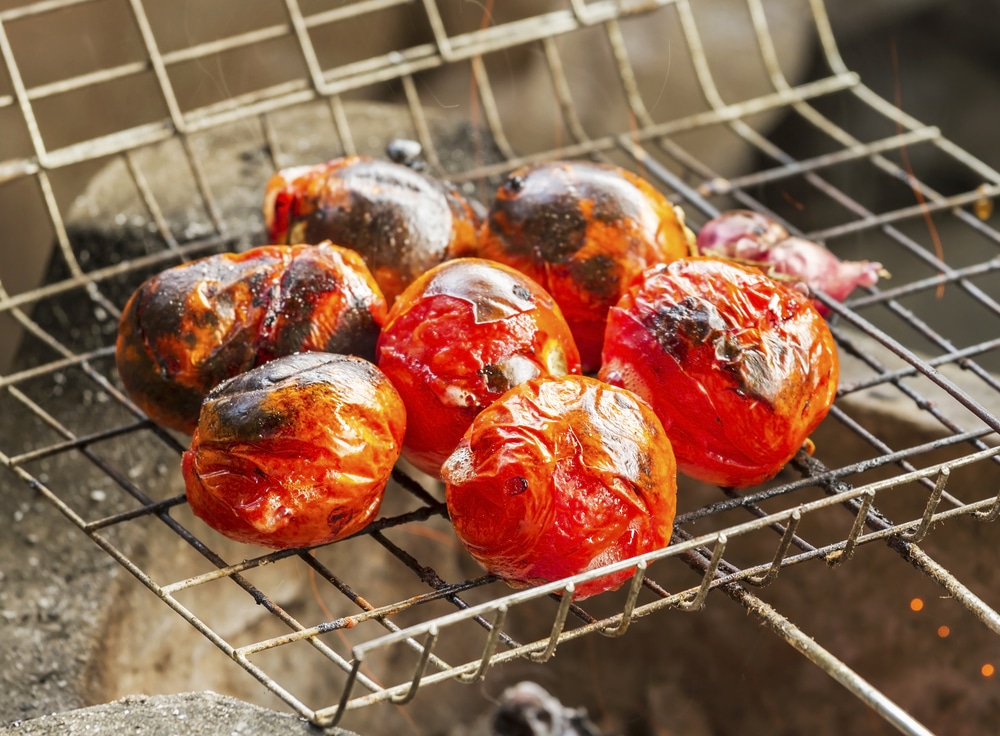
5 Recommended Fire-Roasted Tomatoes Substitutes
Fire-roasted tomatoes are just that: tomatoes are charred over a flame before being diced, then canned. Sometimes, companies enhance the mixture with onion or garlic powder.
Noticeable black flecks are seen in the tomatoes, and the fire brings out the tomato’s sweetness with a sharp smokiness.
These tomatoes add more flavor to your dishes, and the smokiness is crucial to balance recipes, whether you want the tomatoes to highlight or add subtle flavor. It makes each meal more complex and delicious.
Nonetheless, regular canned tomatoes work just as well, and you can add a pinch of paprika to successfully mimic the flavor. Fire-roasted tomatoes are excellent in salsas and chili.
Here are the nutrition facts for one can (or 190g) of fire-roasted tomatoes:
- 30 calories
- 0.5g total fat
- 219mg sodium
- 363mg potassium
- 6.6g carbohydrates
Now that you better understand fire-roasted tomatoes and their purpose in dishes, let’s get into our first selection.
Diced Tomatoes
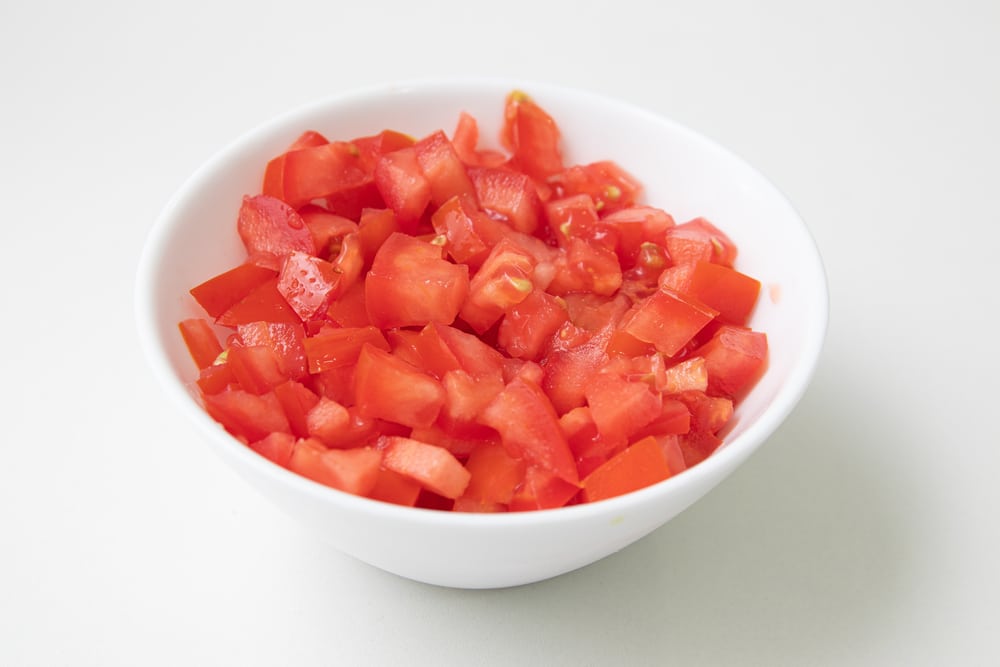
This variation is versatile for countless soups and chili, with chunks of firm, diced tomato submerged in light tomato juices. You don’t have to worry about making a mess preparing tomatoes, and they are nearly identical, making a prime fire-roasted diced tomato substitute.
These tomatoes have more lycopene than raw tomatoes, an antioxidant that has numerous health benefits while adding more flavor to your culinary preparation.
Additionally, diced tomatoes come in various options, such as no-salt, if you’d like to determine the sodium content in your meals and diet. Diced tomatoes act as a hearty base for meals, such as skillet eggs and beans, a quick, inexpensive, and vegetarian dinner.
Furthermore, you can use diced tomato juice in rice or couscous as a substitute for broth or water.
You could also opt to steam mussels or poach fish with this addition and spoon the remaining sauce over the seafood once cooked. Remember to have the right ratio when swapping out these liquids and cook over low heat to not burn anything.
Overall, while diced tomatoes lack the fire-roasted quality, they can be used as a nice thickener after simmering and countering the spicy, intense flavors. A few other quick recipes that include diced tomatoes are curries, gazpacho, pesto, mac and cheese, sauces, sauteed veggies, or even barbecue sauce.
Canned Tomatoes
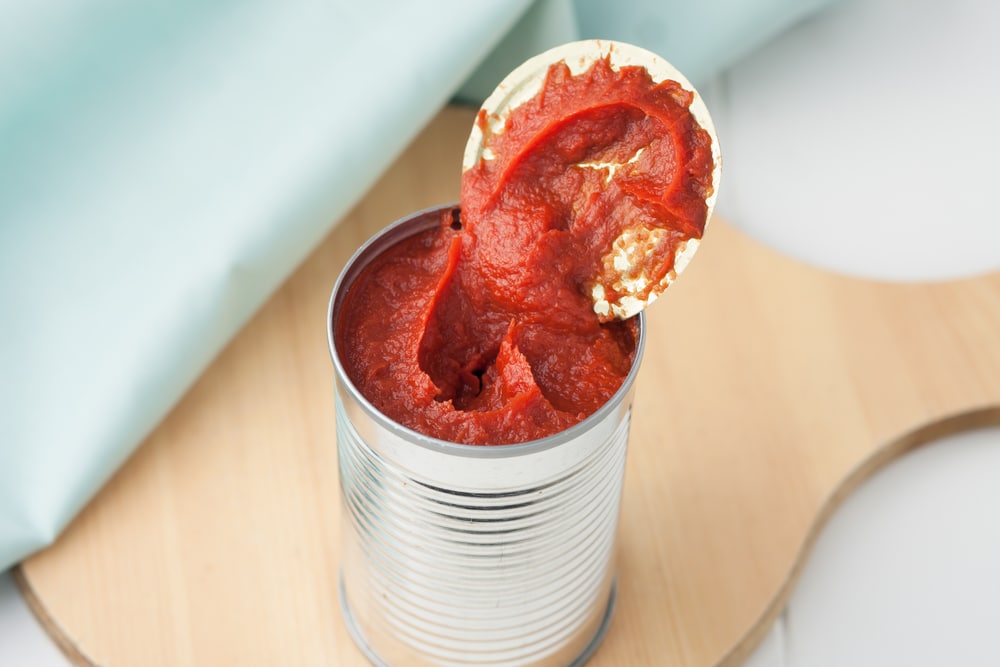
The most common types of canned tomatoes include whole peeled tomatoes, diced or petite, stewed, crushed, pureed, sauce, or paste. The benefit of canned tomatoes is they taste fresh since they’re canned at the height of tomato season when this fruit is perfectly ripened.
They’re canned quickly to preserve the flavor, and all canned tomatoes are technically cooked already. They are picked, sorted, their skins are removed, and are sterilized in a hot bath.
Pasta, pizza, and soup are common recipes that use canned tomatoes. Any home chef needs to have some in their cabinet since they’re affordable and convenient.
Canned tomatoes are rich in glutamates which enhances savory food. Moreover, they add some sweetness, acidity, and color to your dish.
A plus about canned tomatoes is that they can be stored up to 18 months, unopened. They last longer due to their high acid content. However, once opened, should be consumed or thrown away within three days.
Keep in mind that sometimes either salt or citric acid is added to prevent the tomatoes from becoming mushy and brightening their color simultaneously.
Most recipes want the tomatoes for texture, yet they will cook and break down a bit. If not, then too much salt or citric acid was added.
Sun-Dried Tomatoes
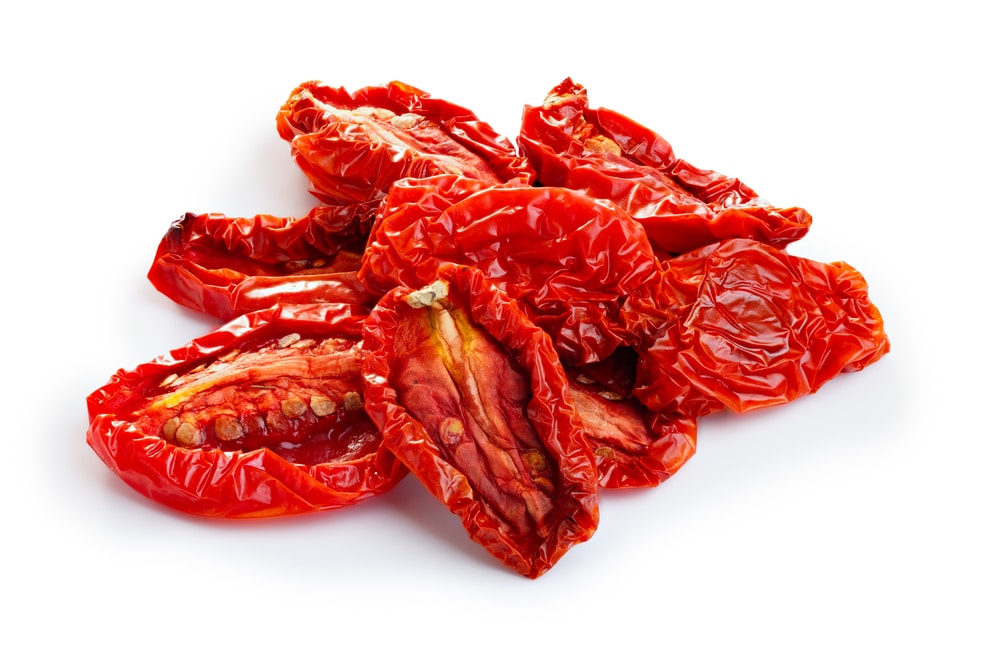
Sun-dried tomatoes can last forever and are the perfect blend of sweet and savory. Normally, you can purchase them dry-packaged or in oil. These types of tomatoes originated to preserve the fruit for long periods by salting and drying them.
Once tomatoes are ripe on the vine, they are cut in half and placed on a raised screen to allow the sun’s rays to dry them out. The tomatoes are then salted and seen as completed once they lose about 90% of their weight in the evaporation process, which can take up to two weeks.
They still maintain their flavor and nutrients. However, you can choose to rehydrate them before cooking. Rinse them with water, then place them in a pot to boil on high. After drying, you can toss them in olive oil and add them to your dressings or vinaigrettes.
Sun-dried tomatoes are an excellent replacement for fire-roasted tomatoes in Caprese salad to enunciate that strong tomato flavor, but remember to not go overboard. You can incorporate them into your bread dough with Parmesan cheese then bake them.
Vegetarian sushi or lasagna would highlight the sun-dried tomatoes. The best part, you can make them yourself too.
Tomato Puree
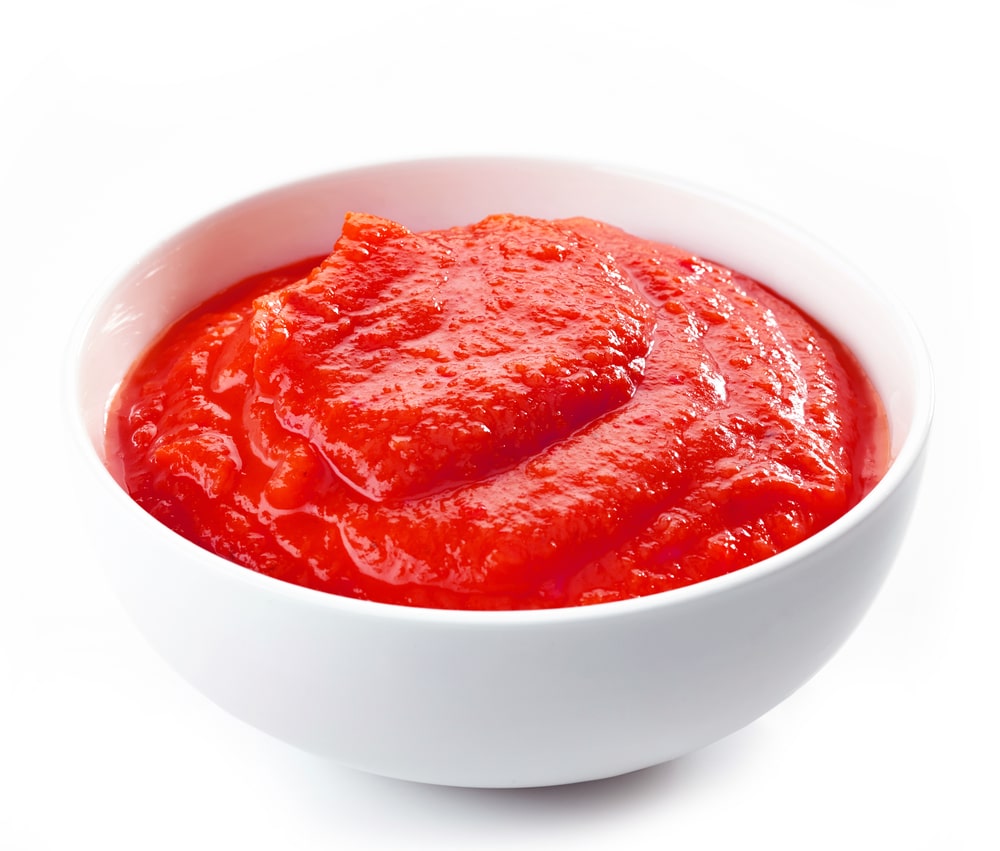
This option is the smoothest and is made by taking cooked tomatoes, straining, and removing any seeds before pureeing them.
Even though the flavor is not as fresh or noticeable, this is an excellent selection to provide a tomato base for many meals. Slow cooker recipes or a quick pizza sauce are also options.
Tomato puree is very liquidy and not as solid as the other options on this list. However, puree acts as a fire-roasted tomato substitute due to its mild, fresh flavor that can be manipulated with spices according to whatever recipe you’re using.
Tomato puree enhances a lot of dishes, and you can make it yourself without having to dirty up the kitchen too much.
Additionally, puree provides flavorful liquid for stews or sauces, building upon the spices and other ingredients. Seeing that it’s more liquid, it doesn’t do as well as paste does with spreading, which is elaborated more in the following section.
Tomato Paste
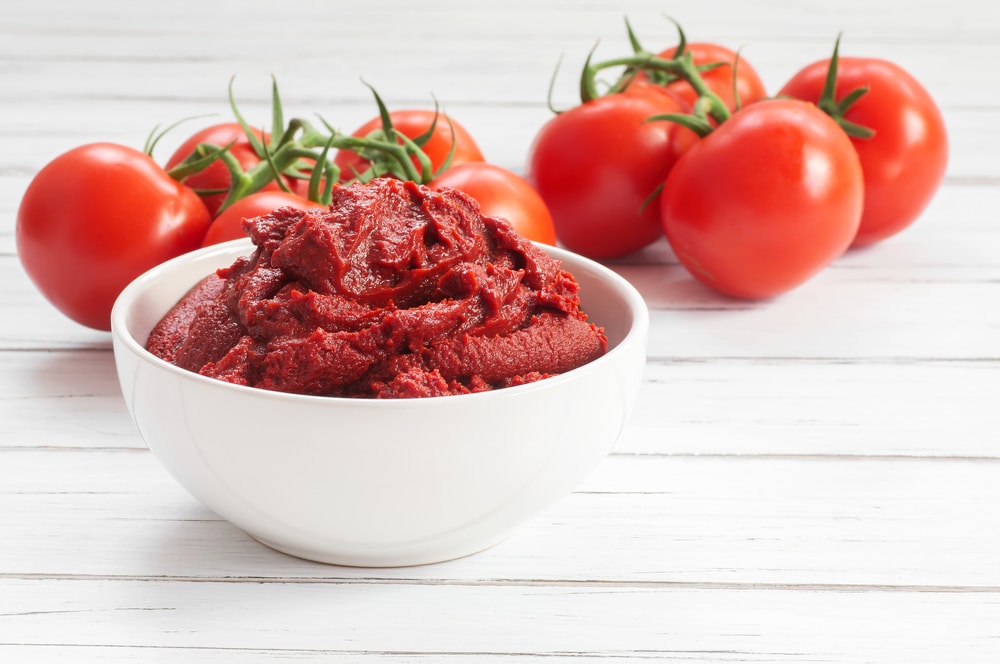
Tomato paste has a weird consistency. It’s like putty and comes in little cans or tubes. Despite that, its flavor is huge and concentrated.
Tomatoes are cooked down, and all the pesky bits are removed, then cooked down again into a super-dense, pasty mixture that has bright acidity and a strong umami flavor. With tomato paste, a little is a lot.
Similarly, you might find some seasoned or flavored variations, but you should skip those and add your ingredients to the plain paste. The flavor will be more fresh and robust.
The best approach in cooking tomato paste is to caramelize it with olive oil before adding it to your dish. If you add it without this preparation, you’ll just get a bland tomato taste.
You’ll get another layer of flavor for your sauteed veggies, meats, soups, sauces, pasta, and marinades when using paste instead of fire-roasted tomatoes.
Frequently Asked Questions
Here, we’ll provide answers to some of the common inquiries about substituting fire-roasted tomatoes.
Can I substitute fire-roasted diced tomatoes for diced tomatoes?
Yes, you can (as seen above). You can also make your regular canned or diced tomatoes fire-roasted by drizzling them in olive oil, seasoning them with salt and pepper, and adding any aromatics, such as thyme, oregano, garlic, anchovies, or red pepper flakes.
Place the tomatoes into a 350-degree oven, and without stirring, let them bake for about an hour and twenty-five minutes.
Are fire-roasted tomatoes the same as sweet tomatoes?
No. Fire-roasted tomatoes are tomatoes packed in juice with a smoky-charred, or grill, flavor. They can be spicy and are commonly used in Mexican cuisine for a recognizable Southwestern flavor.
Since fire-roasted tomatoes are 100% natural with no artificial flavors, ingredients, or preservatives added, they are healthy and satisfying. If you don’t have access to any tomatoes, opt for roasted bell peppers, mushrooms, or artichoke hearts.






